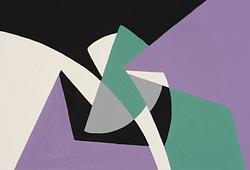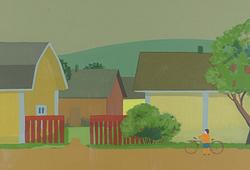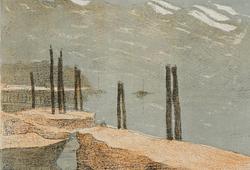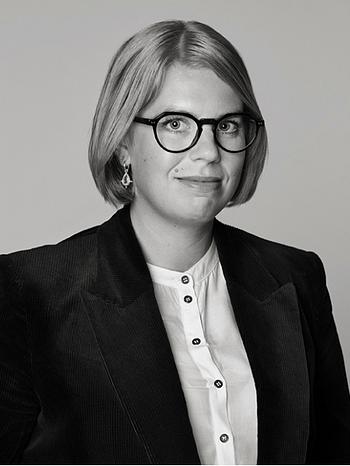Elsa Thoresen
"Månljusets fjäril"
Signed E Thoresen. Executed circa 1949. Canvas 27 x 22 cm.
Alkuperä - Provenienssi
Private Collection, Halmstad.
Purchased from the above around the year 2000.
Näyttelyt
Borås Art Hall, "Vilhelm Bjerke-Petersen, Egon Möller-Nielsen and Elsa Thoresen", 17 - 31 March, 1949.
Louis Hahne's art salon, Stockholm, 1950, cat. no. 29.
The Art Hall, Örebro, "Vilhelm Bjerke Petersen and Elsa Thoresen", 2 - 16 March 1952, cat. no. 12.
Värmland Museum, Karlstad, "Vilhelm Bjerke Petersen and Elsa Thoresen", 6 - 24 September 1952, cat. no. 43.
Muut tiedot
The artist Elsa Thoresen was born in the USA but of Norwegian descent. She lived for a few years in Oslo, where she also received her education. For a period, she studied at the Academie des Beaux-Arts in Brussels, Belgium. Later, Thoresen moved to Denmark, where she married the artist Vilhelm Bjerke Petersen. They were both central figures in the radical Danish surrealism movement, a group that directed its efforts against the Nazi German occupiers during the war. However, they managed to escape to Sweden, where they became closely associated with the artists of the Halmstad Group.
Thoresen was notably appreciated by the leading figure of international surrealism, André Breton. He selected works by her for the movement's major exhibitions in 1938 and 1947. After fleeing to Sweden, she worked both in Sweden and Denmark for several years but returned to the USA in 1953. Over the years, Elsa Thoresen faded into obscurity, but in recent years, her artistic legacy has been rediscovered. In 2018, the public was able to see a presentation of her works for the first time in many years at the exhibition Women’s Surrealism at Kunstforeningen Gl. Stranden and the art museum in Tønder, Denmark, and at Mjellby Art Museum in Sweden.



















































